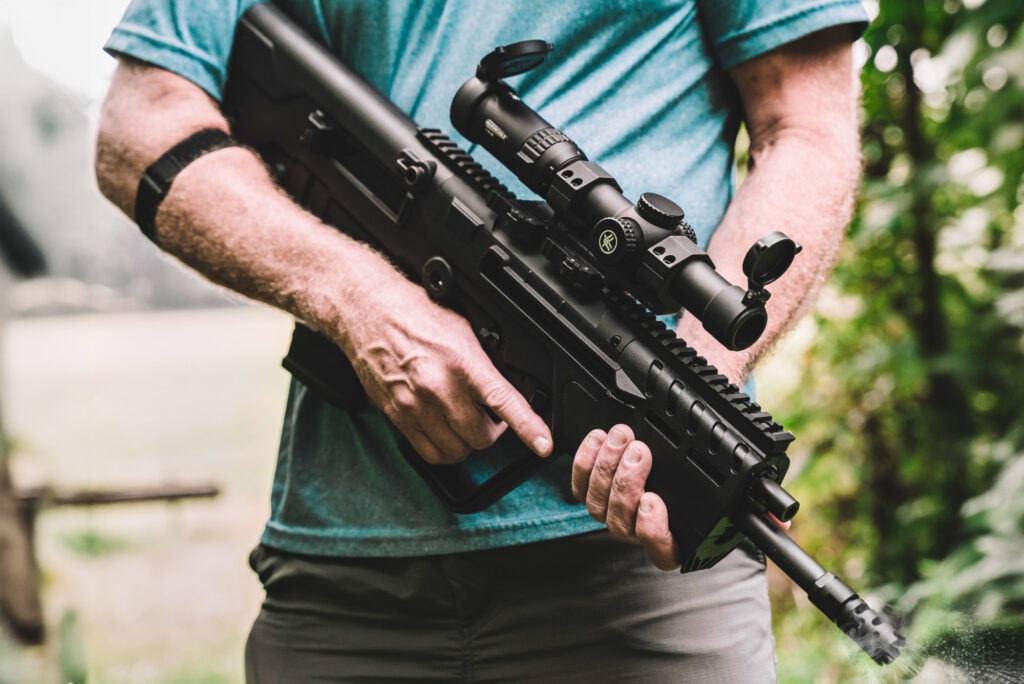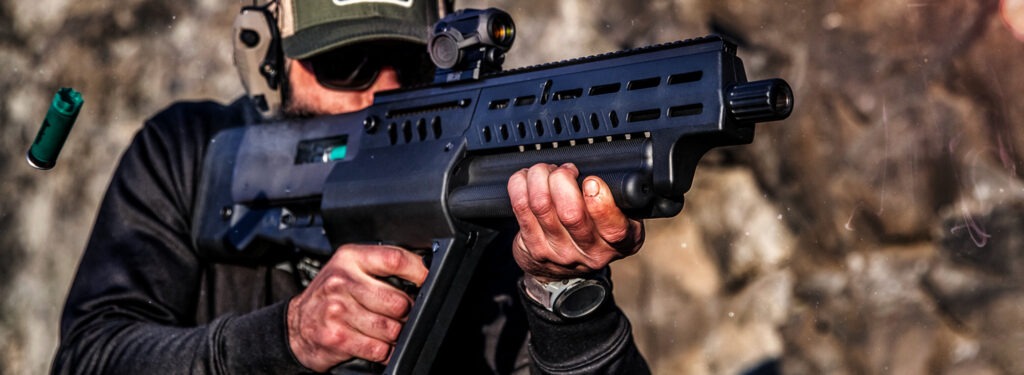What is a Bullpup Gun?
Understanding the Bullpup Firearm Configuration
Bullpup firearms are primarily rifles whose actions and magazines are positioned behind their grips and triggers. While the concept may seem modern, it actually dates back to the late 19th and early 20th centuries in England. Early bullpup models, like the Thorneycroft Carbine, were mostly used in benchrest target shooting. Back then, the bullpup design was considered more of a novelty or was tailored for specific target shooting purposes. However, from a tactical standpoint, the concept of bullpup firearms didn’t gain popularity until after World War II.
The Origins of the Name “Bullpup”
The term “bullpup” comes from a combination of the words “bull” and “pup.” Nearly 100 years ago, “bull pup” referred to bulldog puppies—small, squat, yet powerful and aggressive. This name became associated with firearms whose actions are set behind the trigger, reflecting the compact and potent nature of the design.
What Qualifies a Bullpup Rifle or Shotgun?
The defining characteristic of bullpup shotguns or rifles is their efficient use of space. By positioning the action further back, designers don’t have to shorten the barrel to create a compact firearm. This design maintains the original barrel length by eliminating the stock as a standalone part and using that space to house the action and magazine well.

Longer barrels tend to be more ballistically efficient because they allow expanding gasses to burn more completely, resulting in higher bullet velocities. From a tactical perspective, the bullpup configuration offers advantages in mobility, especially in tight spaces such as vehicles, narrow hallways, and close walled urban environments.
Key Differences Between Bullpup and AR-Style Rifles
There are distinctions between bullpup rifles and standard AR-style rifles. The most notable differences are in the stock/receiver design and location of the magazine and controls. Internally bullpup and conventional firearms tend to operate very similarly. Same parts, different locations.
Magazine Location: On AR-style rifles, and other conventional designs like the AK family, the magazine sits in front of the grip and trigger. On bullpup rifles, it is placed behind the grip to move the whole action back into the stock.
Stock: Unlike AR-style rifles, bullpup designs typically don’t have or need stocks as separate parts, the stocks are instead made around the receiver and action. This gives bullpup firearms their unique short, squat, and ‘stockless’ profile, making them highly maneuverable.
Weight Distribution: While many of the bullpup designs on the market are objectively heavier than some modern conventional rifles, the 13” barreled X95 is about 1lb heavier than a 14.5” barreled M4A1, by moving the weight closer to the body and shortening the overall length, the influence of that weight on the user is greatly reduced (leverage) thus holding a bullpup in a ready position is much less fatiguing overtime.
Reliable and Efficient Bullpup Guns
Bullpup firearms are designed for space efficiency and mobility, making them ideal for certain tactical environments. The Tavor series developed by IWI was built to monopolize those advantages, created to excel in close-quarters combat (CQC) and counter-terror operations in the tight confines of the IDFs operating environments. Over the years, the Tavor has undergone significant improvements, which are now available in IWI’s current bullpup lineup.

Summary: Key Takeaways
- Bullpup firearms position their action and magazine behind the grip for space efficiency.
- The name “bullpup” reflects the compact, powerful nature of the design.
- The bullpup configuration allows for longer barrel lengths without compromising the gun’s compact size.
- Bullpup designs are ‘stockless’, making them distinct from AR-style rifles.
